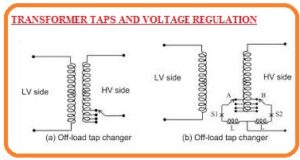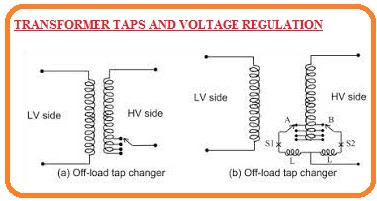 Hi readers welcome to the new post. In this post, we will have a detailed look at Transformer Taps and Voltage Regulation. The tap changer is process used in the transformer which permits to change different turns to choose different phases. For this process, different points are linked which called taps to the primary and secondary windings. There are 2 main types of tap changer first is the no-load tap changer that should be off before the adjustment of trn ration
Hi readers welcome to the new post. In this post, we will have a detailed look at Transformer Taps and Voltage Regulation. The tap changer is process used in the transformer which permits to change different turns to choose different phases. For this process, different points are linked which called taps to the primary and secondary windings. There are 2 main types of tap changer first is the no-load tap changer that should be off before the adjustment of trn ration
The 2nd one is an on-load tap changer that can be adjusted turn ratio when it working. The tap chooses at any tap changer can be created through an automatic network. The automatic tap changer also employed at less and high voltage coils in case of high voltage production and sending applications. These types of tap changers is used in high voltage rating transformers. In this post, we discuss its working, circuit, and applications. So let’s get started with Transformer Taps and Voltage Regulation.
Transformer Taps and Voltage Regulation
- The description of the transformer is done through turns ratio and primary to secondary windings voltage ratios.
- In real distribution transformer it not take into consideration the fixed behaviour of turn ratio.
- In this transformer there is a sequence of taps in the windings that allows making a minor variation in the turns ratio of the transformer then it is selling our form manufacturing place.
- The normal installation consists of 4 taps with respect to the general adjustment having space of 2.5 percent for full load voltage among this point.
- This configuration used for configuration to five % over or less the nominal voltage values of transformer.
- The tap at the transformer allows the transformer to set positioned int the field to make changes in voltage.
- Though these taps generally not be varied when the energy is given to the transformer.
- In certain cases, the transformer is employed at a power line where voltage changes at large value according to load.
- these voaltge regulations should be caused due to line impedance among the production at the power network and certain load value.
- Normal load required to provide certain constant voltage.
Here the question arises.
How can power supply a controlled voltage through high-impedance lines to loads which are constantly varying?
- For this cause, the solution is to the usage of a certain transformer known as tap changing under load transformer also called voltage regulator.
- Generally, TCUL transformer is a transformer that has the capability to vary tap when supply is linked to it.
- The voltage regulator is a TCUL transformer having a voltage sensing circuit that automatically varies tap to retain the network voltage constant.
- Certain transformers are normally employed in the power system.
That is a detailed post about tap changer I tried to cover all points. If you have any further query ask in the comments. thanks for reading. Have a nice day.







